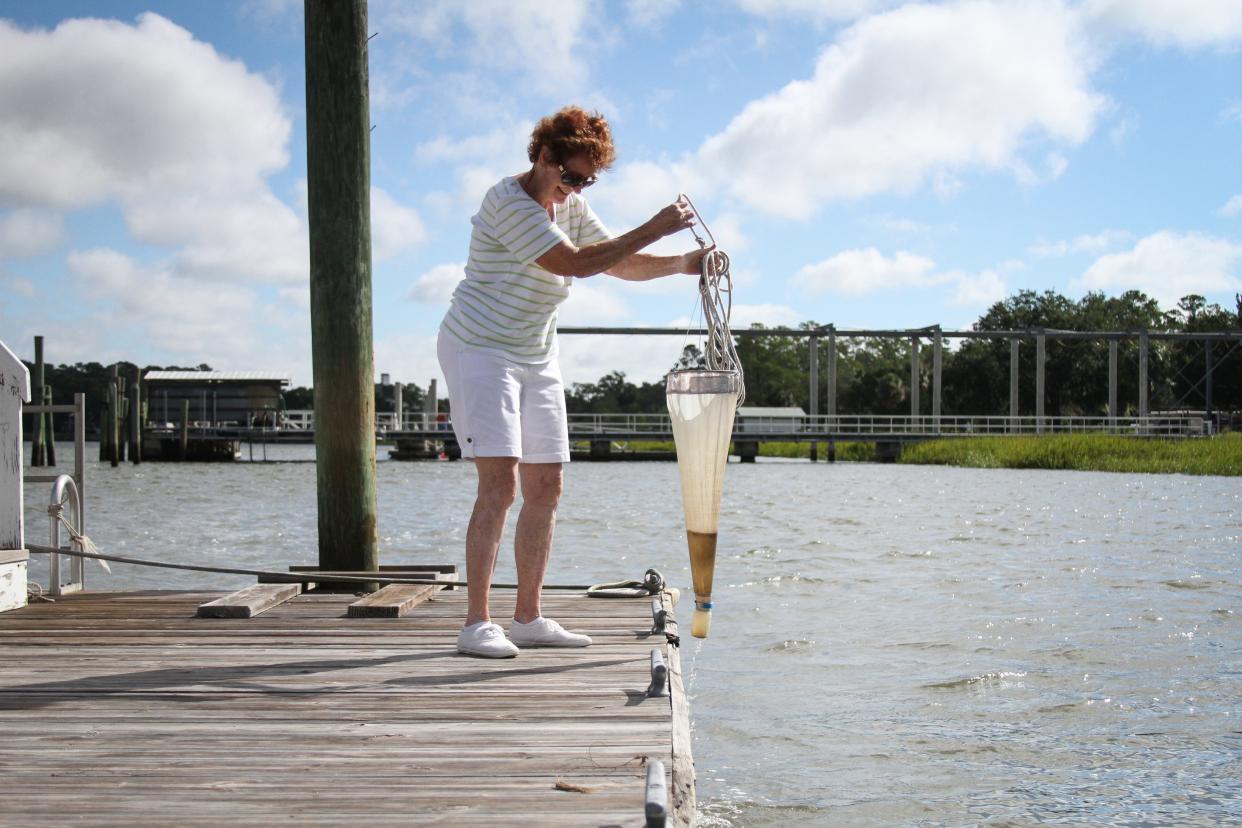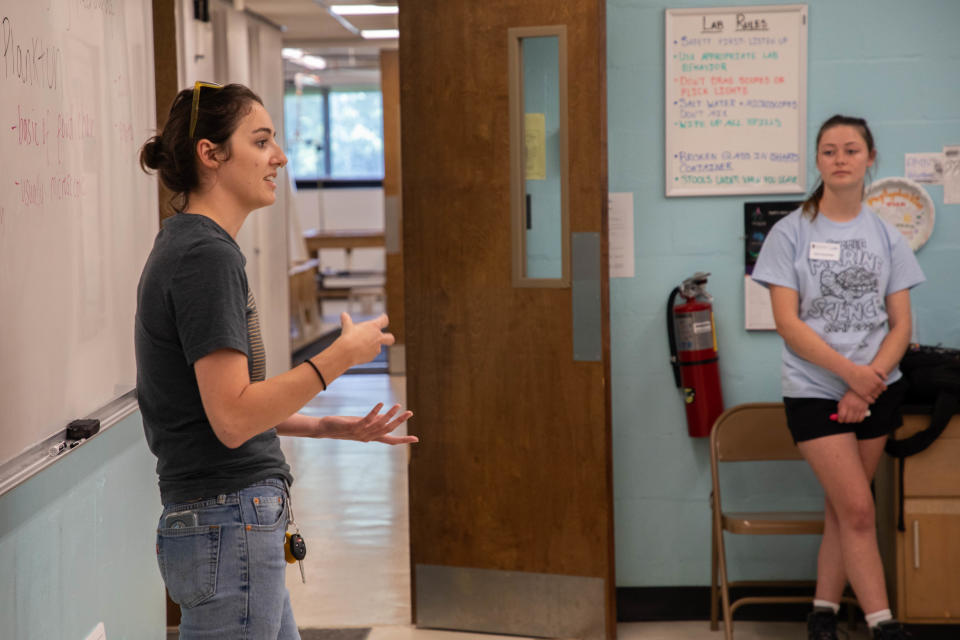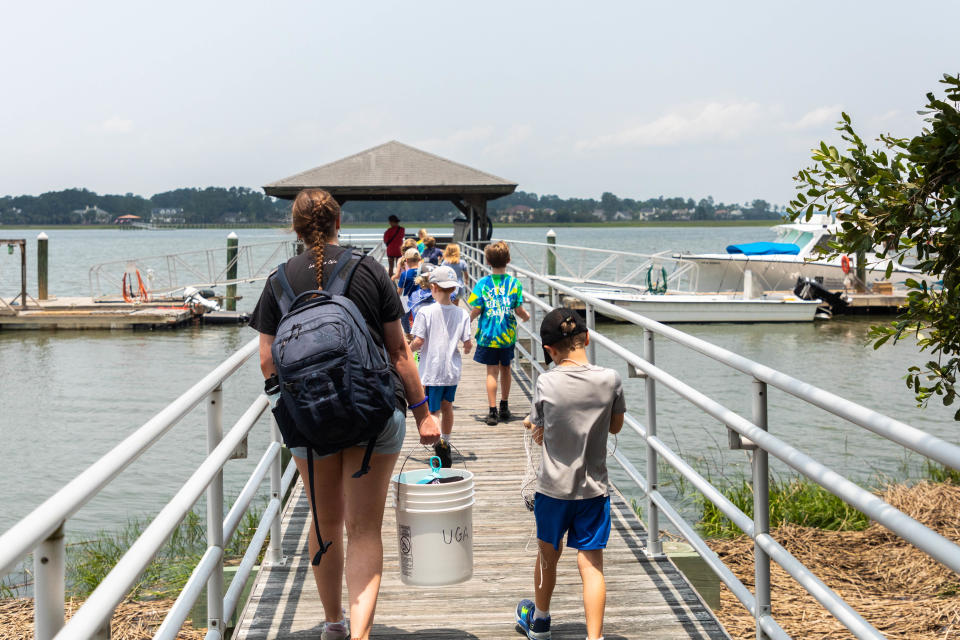University of Georgia researcher monitors local waterways for harmful algal blooms

Imagine growing up on the shores of Lake Ontario, New York. Imagine spending your childhood summers in southeast Alaska where your uncle owns and operates a commercial salmon fishing business. Mallory Mintz (MS graduate student, Cohen Lab at the Skidaway Institute of Oceanography) doesn’t have to imagine.
“I remember lying flat on my stomach on docks in both places, craning over the edge to see the animals underneath… absolutely enchanted by the diversity of critters in Alaska — sea stars and snails and all sorts of crabs.”
She wondered why the waters in New York seemed to lack such diversity. “They’re very different environments, of course, but New York’s waterways had been transformed by pollution and invasive species.” Stories of this environmental change and events like the Exxon Valdez oil spill in 1989 framed her understanding of the natural world as a fragile but resilient place. “I’ve been studying it ever since.”
Life on the Water: Saltwater Science Speaker Series presents oral histories of Georgia shrimpers
Nature of Art: Ogeechee Riverkeeper and artist Juliana Smith partner for creative fundraiser

What’s the harm?
Fast forward to the docks off of Skidaway Island at the UGA Marine Extension and Georgia Sea Grant facilities where Mintz collects water samples twice a day. She is studying phytoplankton, also known as microalgae. She explained that these plant-like organisms are photosynthesizers that typically provide food to a variety of life-forms in the ocean, which then, in turn, supply nutrients for other organisms as part of a balanced ecosystem. Changes in the environment can disrupt that balance and cause Harmful Algal Blooms (HABs). As defined by NOAA.gov, “HABs occur when colonies of algae…grow out of control and produce toxic or harmful effects on people, fish, shellfish, marine mammals and birds.”
Mintz’s research was the topic of the most recent Saltwater Science Speaker Series talk on July 13 at the UGA Aquarium. She shared that she seeks to “describe the internal machinations that allow the HAB-forming species to thrive.” Her work stands on the shoulders of research conducted by folks like Sandy Haeger, who also spoke at the event about the role of citizen scientists. She and other involved locals have been gathering samples for the phytoplankton lab for decades. Mintz is able to mine that historical data and compare the citizen scientists’ current samplings against her own to determine patterns that may reveal a bigger picture.
“Though no major events have happened to our knowledge on the Georgia coast, save for the 2019 Akashiwo bloom, they are a growing problem worldwide.” She cited the work of scientists such as Christopher Gobler for those who want to review more on the topic. “HABs can have severe consequences for the communities and ecosystems that rely on the ocean for livelihood and recreation.”
What environmental causes lead to HABs?
Sewage leaks, pollution, and agricultural run-off (particularly sugarcane) are some factors that could cause HAB formation. Florida’s issue last year with large, pungent HABs was largely due to lack of regulations on sugarcane farmers releasing run-off into tributaries.
Mintz hypothesized that since most of Georgia’s coast is protected there have been fewer instances of HABs. She admits that fewer instances could also be a result of less data. Florida and South Carolina both conduct more regular testing. Georgia could be behind in that regard. “While it’s challenging to predict the future of HABs, especially as we’re still in the data collection phase of our research, warming of the ocean may lead to increases in these events.”
In addition to ocean temperature rise, she’s analyzing rainfall amounts, chlorophyll concentrations, and increased amount of water salinity. “We want to better understand the triggers of HAB events and how they might evolve in changing waterways.”

What’s next?
Mintz remains hopeful (and somewhat not) that a bloom event will occur during her time here so she can analyze it. “For everyone in the Lowcountry, it’s crucial to be informed about the state of our oceans in order to best protect our coastal environments and communities.”
In the meantime, she suggests that if the water locally looks or smells funny to you, then forgo entering it. Don’t let Fido romp through it either. For her part, she eventually wants to study another type of plankton called foramimifera for her PhD. “These organisms (or early versions of them) have been around for half a billion years and make for some of the best records of climate change that we have.”
Find out more about the Phytoplankton Monitoring Network made up of citizen scientists like Sandy Haeger. Also plan to attend the final Saltwater Science Speaker Series talk, Oyster Aquaculture and Restoration, 6 p.m., July 27, at the UGA Aquarium on Skidaway Island.
This article originally appeared on Savannah Morning News: University of Georgia researcher monitors waterways for harmful algal blooms

